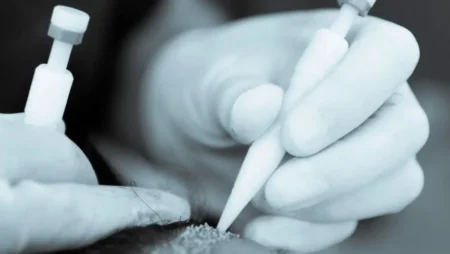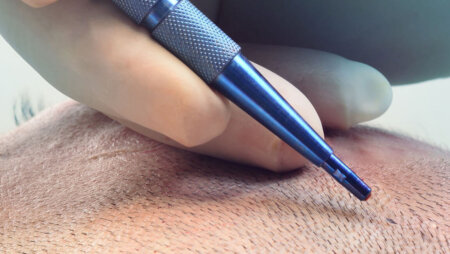Medical advancement and innovative technology has drastically improved fue hair transplant procedure and the achievable hair restoration results. Today, the FUE method has replaced the out-dated FUT method.
The FUE Hair Transplant method allows for more roots to be extracted in the donor area (nape, beard, chest, back, arm, leg). Roots are extracted with the help of a micro-motor. This technique allows for no damage to the extracted roots. The desired quality and number of roots can be obtained depending on the quality of the donor area. The fusiform wound healing in the distal region quickly heals itself. Another advantage of using the FUE method is the rapid healing of the wounds, no permanent scarring, and prevention of root loss.
Postoperative care
The first week after treatment is very important. Care should be taken that the sowing area does not suffer blows and the first few days should definitely not be touched. Also, if the region where it is planted is itchy, itching should be removed with small touches.
Attention should be paid to the transplantation site, particularly when changing clothes. Loose shirts that can be easily worn and removed should be worn to avoid friction and damage to the transplantation sight. Hats and head accessories should be avoided for a week.
The physician will recommend a lying and sleeping position for the first night in order to avoid friction to the transplantation site whilst sleeping.
It is advised not to enter the pool or swim for a few weeks.
Post-Treatment Care
You will be given special instructions on how to care for your skin and hair. These instructions will usually vary between patients due to the different hair structure and transplantation site.
Specialised treatments will be given to strengthen the hair and achieve quicker results. Your doctor does the first washing of your hair after hair transplantation. This will assist you in your next wash.
Postoperative consultations are scheduled to monitor results. There is an average maintenance period of 6 months. Of course, this varies from patient to patient. However, full application of care is important to get the desired result.
You may return to work the next day if you work an office job. Labourers and employees who engage in heavy work may return to work after 1 week.





